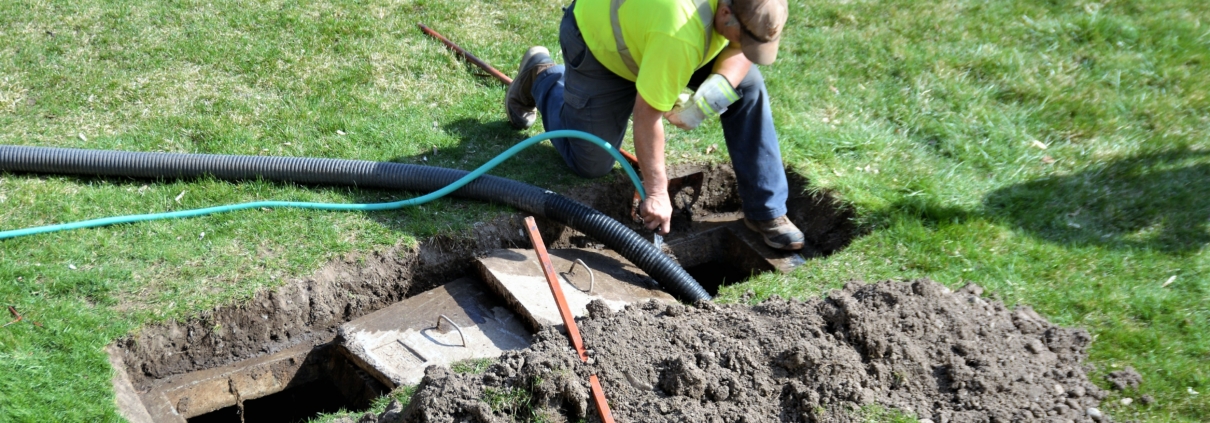What Is A Septic Inspection
Septic inspections are a critical component of responsible homeownership, ensuring the proper functioning of a septic system. Often conducted during real estate transactions or as part of routine maintenance, these inspections involve a comprehensive evaluation of the septic system’s components and overall health.
For homebuyers, an inspection is typically part of the due diligence process before closing a real estate deal. However, homeowners should also consider regular inspections, generally recommended every 3 to 5 years, to identify potential issues before they escalate. Timely inspections contribute to the longevity of the septic system and prevent unexpected failures.
RELATED ARTICLE: Septic Systems
Visual and Physical Examination
Septic inspections commence with a visual and physical examination of the entire system. We assess the location and condition of the septic tank, distribution box, and leach field. Any visible signs of damage, wear, or potential issues are documented. This initial step sets the stage for a more in-depth evaluation of the system’s functionality. Visual cues such as ground indentations, vegetation variations, or access ports aid in locating these underground elements.
We observe the area surrounding the septic system, checking for any potential signs of distress or damage. Issues like odors, lush vegetation, or pooling water near the septic components can indicate underlying problems. Visual cues offer valuable insights into the overall health of the system and guide inspectors in determining where to focus their attention during the subsequent stages of the inspection.
Tank Access and Opening
This step is crucial for evaluating the accumulated layers within the tank and examining the condition of its structural elements. The level of accumulated sludge and scum is observed, and the condition of the tank’s components, such as baffles and inlet/outlet pipes, is assessed. These observations provide insights into the tank’s effectiveness in separating solids and treating wastewater.
The levels of sludge and scum within the tank is a key indicator of how the system is performing. The sludge, comprised of settled solids, and the scum, consisting of lighter materials like grease and soap, indicate the effectiveness of the tank in separating and treating wastewater. This assessment helps determine whether the tank is due for pumping, a routine maintenance task essential for preventing clogs and maintaining the system’s functionality.
Furthermore, we evaluate the structural integrity of the septic tank, examining components such as baffles, inlet pipes, and outlet pipes. Any signs of corrosion, cracks, or deterioration are carefully noted. The condition of these elements directly influences the tank’s ability to retain and treat wastewater effectively. Assessing these details during the inspection allows for timely identification of potential issues that may require repair or replacement.
Distribution Box Examination
The distribution box, often situated between the septic tank and the leach field, serves as the intermediary that ensures the treated effluent is evenly distributed to the leach field for further filtration.
We carefully examine the distribution box to ensure it functions optimally. This entails checking for any signs of wear, damage, or blockages that might impede the uniform flow of effluent. Uneven distribution could lead to overloading in specific sections of the absorption area, compromising its effectiveness in treating wastewater. Addressing issues within the distribution box is vital to maintaining the equilibrium of the entire system.
Moreover, inspectors assess the connections and pipes leading from the distribution box to the absorption area. Any obstructions or damage within this network could disrupt the flow of effluent, hindering the natural filtration process in the leach field. By examining the distribution box, we gain an understanding whether the treated wastewater is efficiently and uniformly dispersed across the leach field, optimizing its capacity to absorb and purify the liquid.

Absorption Area Assessment
The absorption area, often referred to as the leach or drain field, represents the culmination of the septic system’s efforts in treating wastewater. During a septic inspection, this vital component undergoes a comprehensive assessment to evaluate its overall health and effectiveness in natural filtration.
We examine the absorption area for signs of stress or malfunction. This involves scrutinizing the soil’s absorption capacity, ensuring it can adequately absorb the treated effluent. Any standing water or soggy areas within the absorption area are red flags, indicating potential issues such as soil compaction or drainage problems. Identifying and addressing these concerns is crucial for preventing system failures and maintaining the long-term viability of the septic system.
Additionally, we evaluate the condition of the pipes or chambers buried in the absorption area. These components facilitate the percolation of effluent into the soil. Any damage or blockages in this network can impede the distribution of treated wastewater, compromising the efficiency of the entire system. By conducting a thorough assessment of the absorption area, we can detect critical issues and provide homeowners with valuable insights into the functionality and sustainability of their septic system.
Repairs and Maintenance Recommendations
If any issues are identified during the inspection, the we may provide recommendations for repairs or maintenance. This could include pumping the septic tank, repairing damaged components, or addressing issues in the leach field. Timely action based on these recommendations can prevent minor problems from developing into more significant and costly septic system failures.
Beyond the assessment and recommendations, septic inspections serve as an educational opportunity for homeowners. We take the time to educate homeowners about proper septic system care, including routine maintenance, responsible water usage, and signs of potential problems. This knowledge empowers homeowners to take an active role in preserving the health and functionality of their septic systems, fostering responsible ownership and environmental stewardship.




